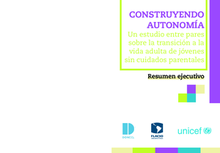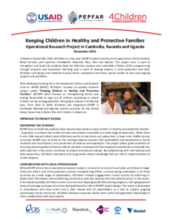Demographic Data
|
Sources: World Bank, UNDP, UNAIDS, DHS 2013 |
Displaying 11151 - 11160 of 14391
The present evaluation examines the National Child and Youth Development Plan, which provides a framework for the development of children and youth in Thailand. The evaluation aimed to review the design and implementation of the NCYDP and to generate lessons in order to improve the operation of the current plan and to inform the development of a follow-up plan for the period beyond 2016.
The National Social Protection Policy of Ghana provides a framework for delivering social protection coherently, effectively and efficiently in a way that is holistic and properly targeted.
Las evidencias presentadas en este documento fueron elaboradas a partir de una investigación que se propuso realizar una primera aproximación a la situación de los jóvenes sin cuidados parentales frente al egreso en Argentina.
The two-day course outlined in these pages is designed to familiarise groups of care professionals with the international standards and principles surrounding children’s rights – and above all, to relate this to the daily experience and challenges arising in the field of alternative care.
The two-day course outlined in these pages is designed to familiarise groups of care professionals with the international standards and principles surrounding children’s rights – and above all, to relate this to the daily experience and challenges arising in the field of alternative care.
Este nuevo relevamiento muestra y analiza datos actualizados relativos a la cantidad de niñas, niños y adolescentes (NNyA) sin cuidados parentales en la República Argentina, los lugares de cuidado donde están alojados, las condiciones en las que viven, el organismo que decidió que fueran separados o separadas de su mamá, papá o familia ampliada, los motivos de esta separación, los tiempos de permanencia en las instituciones, los motivos de ingreso y egreso.
This is an evaluation document that promotes family-based care in Cambodia.
This two-page brief from USAID describes the “Keeping Children in Healthy and Protective Families” project, a project that is part of 4Children that “focuses on strengthening family care among households at high risk of children separating or where children can be reintegrated after having been placed in residential care.”
Las evidencias presentadas en este documento fueron elaboradas a partir de una investigación que se propuso realizar una primera aproximación a la situación de los jóvenes sin cuidados parentales frente al egreso.
In this letter to the editor, the authors express their support for the continued use of “baby hatches” in China.









